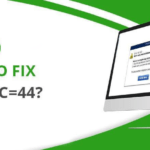The size of a business doesn’t matter when it comes to handling finance. As your business grows and you continue processing more transactions, you need to manage both Accounts Receivable and Account Payable. If you are not following so, this indicates that you are at risk to pay your bills or not being paid from your vendors for all goods and services you provide. Let’s try to understand “What is accounts receivable” in detail via this informative post.
Having deep knowledge about “What is account receivable?” can assist you to improve cash flow management, maintain flexibility, and capitalize opportunities. You must aware of the strategy to run a successful business is to establish an effective account receivable (AR). Even though, many business owners will be unable to take a methodical approach to the situation. So, it will be better to devote time and effort to improve and get proper knowledge about “What is meant by account receivable?”
What is Accounts Receivable (AR)?
Accounts Receivable or AR is the money that a business is owned. Simply, accounts receivable shows the credit amount that has been extended to a customer in exchange for goods or services. Generally, it is different than the credit a financial institution offers. Accounts receivable is an asset that a business can leverage to finance their functions.
It is significant to calculate the balance in the accounts receivable account to ensure timely collection of outstanding debts. Further, we will talk about the process to manage accounts receivable efficiently.
Important Note: Accounts Receivable (AR) is an asset account, not a revenue account. But, you have to record revenue and account receivable at the same time under accrual accounting.
What is the Importance of Accounts Receivable?
It is obvious to get maximum profit in case of having a lot of customers. However, if you are getting late payments or aren’t getting payments at all, then this can be harmful to your business. The main reason to get stuck in issues related to cash flow is getting late payments from your customers.
Here, we have discussed some of the benefits of knowing about account receivable:
- You will be able to earn interest from a bank deposit.
- Another benefit of accounts receivable is “having enough cash” to run your business for a long time.
- You don’t need to spend too much on chasing your clients.
- After understanding accounts receivable, you can make your receivable turnover ratio better.
- Assist you to manage company financial statements.
- You will have a good relationship with your customers that will help you in the growth of your business.
- It helps in increasing the overall sales of the business.
How to Minimize Accounts Receivable (AR)?
As we understand, keeping a record of the money that will be added to the assets in the financial statement of the business is called Accounts Receivable (AR). You may know that the lower balance of accounts receivable will be better for your business. Hence it is mandatory to minimize your accounts receivable and increase the cash flow for the business. Below are some methods for the same.
- Check your outstanding bills: If you know all about accounts receivable, then it will help you to understand how much money is due to collect from your customer. It is a must to have all the required information in one place so it will help to make instant decisions for the growth of your business.
- Set Expectations: You are required to set a clear deadline whenever get connected with your clients regarding a bill or payment. This will help you to get payments soon. In case of getting late payments, you need to get in touch with your clients who always delay in payments. You are required to set the expectation in the way that no client can say “you have never told me before”.
- Communicate with your clients: Your priority is to collect your payments immediately so that you can pay your suppliers on time. And, this will help you to make a good relationship with your suppliers too. If you have a bill of someone that is coming to the end, then you must need to remind them to pay instantly. This will surely help you to make a balance between accounts payable and accounts receivable.
The Procedure of Collecting Outstanding Debts
You must aware of the importance of accounts receivable to improve the cash flow of your business. Including this, your most top priority must be collecting payments. Invoice statements should be reviewed regularly for each outstanding account.
Here are the additional methods to collect outstanding debts timely:
- You should not delay making calls especially with clients who have a history of paying late.
- Keep including a prepaid payment envelope with each invoice to curb late payment excuses.
- Try to get credit references for new clients and ensure them out in detail before permitting to extend the client credit.
- You must review the invoice statements on a regular basis. In case, debt has been on your books for so long, then it should be required to collect your payments as soon as possible.
- If any of the methods did not help you in collecting the amount, then you can connect with collection agencies as a last resort.
Considering the aforementioned methods, you can collect your outstanding debts effectively.
Methods to Get Payments Faster From Your Customers
In case, you are getting late payments from your customers, then this can be stressful and time-consuming. However, if you try to deal with such issues timely, you can prevent yourself from such situations. The following is a list of some methods that you can apply to remind your customers to pay you sooner.
Method 1: Provide them a Financial Incentive
The first thing you need to do is giving a financial incentive to your customers. Furthermore, you need to offer them a discount for paying invoices early. For instance, offer them a 2% discount in the case of paying within 15 days. In this way, you can get your payments faster.
Method 2: Schedule regular reminders
You can also remind them about a late payment via a phone call. Moreover, you can also remind them by sending them an email at regular intervals like after 15-30 days, 45 days. Such scheduled reminders can help to get your payments faster.
GET INSTANT RESOLUTION
Get our expert Quickbooks ProAdvisor on call to resolve your query in no-time.
Method 3: Make a credit policy
Extending credits to your customers might hamper your business. So it is advisable to stop extending credit to your clients by making a credit policy. In this way, you can reduce the business risk that usually causes more issues and problems.
You are required to develop clear guidelines in a case of unable to extend credit to your customers. And, don’t feel hesitant to enforce them even this indicates to turn down a few peoples. This will also help you to make your new customers understand your credit policy and they will remember to make your payments on time.
What Can You Do In A Case of Not Getting Payments?
There can be instances in which you have applied all of the aforementioned methods, but still not get payments from your customers. In such situations, you don’t need to fret at all. We would like to tell you that there can be two situations; either you don’t get payments or there is no scope to get payments at all.
We will explain both of the situations to make you understand more about these situations.
Situation 1: When you have applied all of the aforementioned methods, but still have not got your payments, then apply the following methods to get rid of this issue:
- Add their account into a long-term note
In case, you have a good relationship with your customers who make late payments, then it will be better to add their account receivable into a long-term note. In such a situation, you should record the accounts receivable as a loan (that is due more than 12 months) in your books.
- Restrain customers from availing of goods and services
In the case of getting late payments, most of the companies will stop delivering goods or services to their customers if the due date of the bill is more than 120, 90, or 60 days. In case of restraining those from getting services can send a message to make payments on time. And, this will also help to convey your customers that you are not interested to extend your business with those who break the rules.
- Take assistance from a collection agency
If for any reason, the aforementioned methods did not help you to get your money on time, then you need to hire a collection agency. Additionally, you may also have an option to connect with a collection agency in case of failing to contact your clients. Including this, we recommend getting in touch with your customers before hiring a collection agency and try to provide them a chance to make your payments.
Well, it will be always better to compromise with your customers. Since this is not a time taking process and less expensive option. Along with this, you should know that collection agencies charge a big amount of the collectible amount.
Situation 2: When there is no scope to receive your money at all, go through the following:
This situation is mainly known as “Bad Debt”. This may take place when the costs of collecting the debt start reaching the total value of the debt. At this time, you may have to think about writing off the debt as “Bad Debt”. This indicates that your customer is no longer financially stable to pay your money and declared as bankrupt.
According to IRS, the bad debts consist of the terms such as credit sales to customers, business loan guarantees, and loans to clients and suppliers. While calculating taxable income, business deducts its bad debt from gross income.
Final Words…!
Finally, we hope that you have understood all about “What is accounts receivable”. Generally, managing outstanding debts is key to keeping your business running for a long time. It not only means getting the money you owed but also having a good rapport with your vendors. You can also avail of numerous benefits of Accounts Receivable. If you are still trying to look for more information about accounts receivable, then get in touch with our team by dialing our toll-free Support Phone Number..
We, at QASolved, provide you all the required information regarding all types of accounting services. Not only you can get support related to accounting issues but also we handle bookkeeping, filing taxes, and manage business finances.
Frequently Asked Questions (FAQ’s)
A: Well, you have to record revenue and account receivable simultaneously under accrual accounting. However, accounts receivable comes under an asset account.
A: In the balance sheet or chart of accounts, you can find accounts receivable under the section of “current asset”.
A: When your client is incapable to pay your due amount and declared as bankrupt, this situation is called bad debt.
A: When accounts receivable increases, you need to record it on the debit side of the balance sheet and vice-versa. As you may know, accounts receivable increases with the increase in cash flow and decreases when you haven’t collected your payments from your clients.
A: The main function of accounts receivable is to create an invoice for service performed. Along with this, AR helps you in collecting payments from your customers on time.
A: Generally, if you have a lower balance of accounts receivable, this indicates your customers are paying you immediately. So having lower AR will be better.
A: You need to start by adding the beginning accounts receivable and ending accounts receivable. And then, divide the answer by 2. After that, divide the result into the credit sales for the year.
A: The types of accounts receivable are: Accounts Receivables, Notes Receivables, and other receivables like rent, term deposits, and loans.
A: The prime to reduce your accounts receivable is to “make credit policies”. Additionally, you can also reduce payment terms to minimize accounts receivable.
A: The procedure for accounts receivable consists of setting up a process for extending credit, making invoices, manage transactions, and do accounting roles.




















